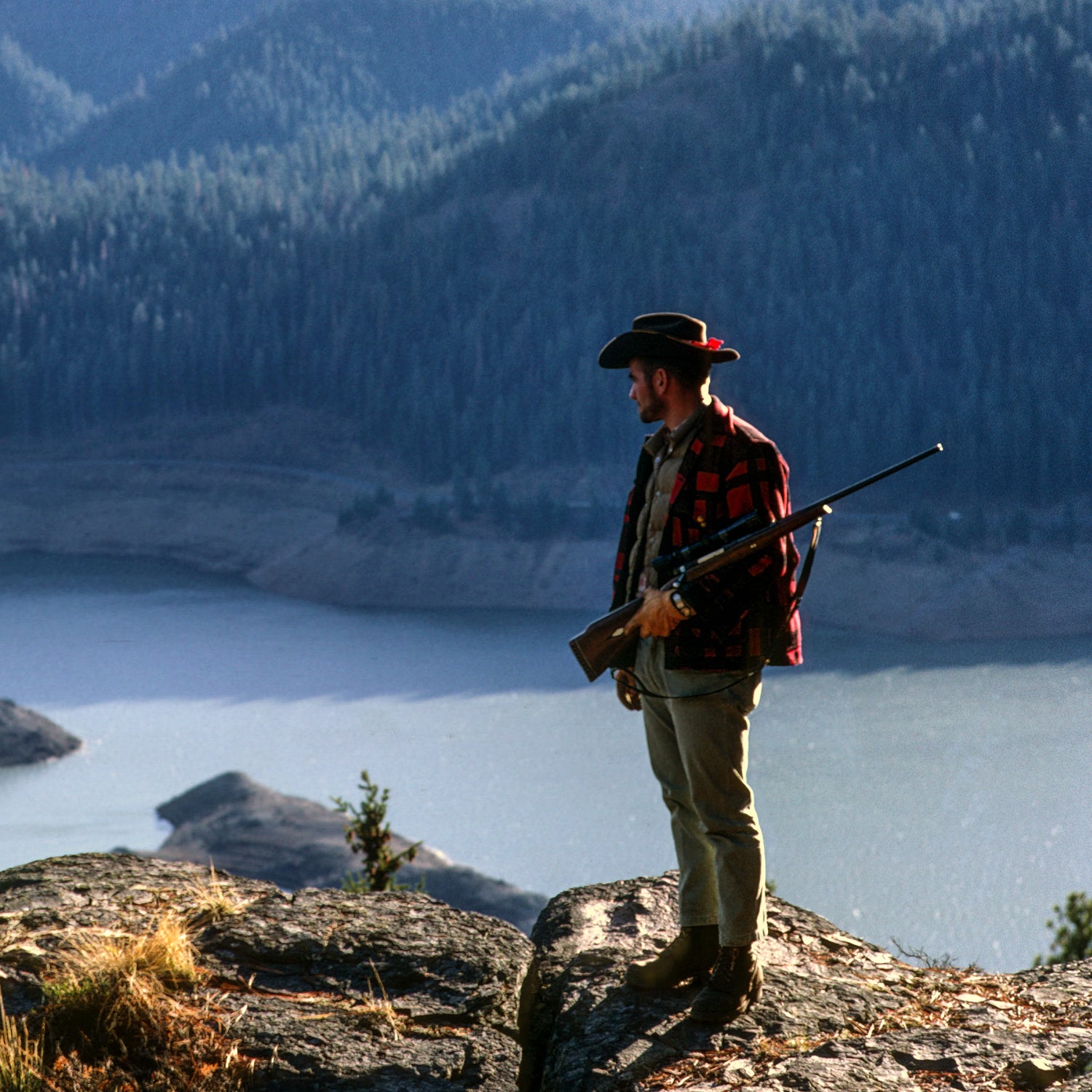The 3,100-mile Continental Divide National Scenic Trail takes hikers through some of the country’s most remote areas, but a certain stretch in New Mexico is not what you’d consider wild. Two hours southwest of Albuquerque, where the trail cuts between the Pie Town and El Malpais National Conservation Area, thru-hikers have to trudge along 52 miles of highway shoulder as the divide itself was locked up by private property.
Hikers got a break in 2016, though, when the (RMEF) acquired a 5,800-acre patch of land in New Mexico and transferred it to the Bureau of Land Management. The BLM had been interested in the property for years, but it wasn’t until the foundation stepped in that a deal was struck.
“The only story being told was the Continental Divide trail portion, which is phenomenal,” says Susanne Roller, a manager with the foundation’s lands program who helped broker the deal. “But the picture is a lot larger than that. There are cultural artifacts on this property. There’s a riparian area with a cottonwood gallery. To be able to help protect that is amazing.” RMEF was able to help secure funding for the deal, and its reputation as a hunting organization gave the organization clout in the property owners’ eyes. As a result of the foundation’s work, the BLM is planning to move the trail off the highway, so the deal benefits not just hunters but also hikers, backpackers, and cyclists who can now access to some 35,000 acres of BLM and Cibola National Forest that were previously inaccessible.
At a time when public land and access to it have become divisive topics, the Rocky Mountain Elk Foundation exemplifies a localized, consensus-building approach to conservation. Since 1984, it has acquired more than 636,000 acres of private property and opened it to public access, usually by conveying it to the federal government. Another 594,000 acres have been placed under conservation easements, and the group’s restoration and preservation work has touched more than 7 million acres.
“When we do management in elk habitat, that may benefit 20 or 25 other species that are out there,” says Blake Henning, the foundation’s chief conservation officer. “I always try to tell people elk are a great symbol that allows us to raise money to do habitat work—money you otherwise wouldn’t get.”
“That land could’ve been subdivided into more houses.”
Lands program managers like Roller are a big reason the group is so effective. Each manager covers multiple states and juggles more than a dozen potential projects. “The vehicle I’m driving right now has 202,000 miles on it, and I’d say most of those miles were put on in the last four years,” says Roller, who oversees projects in New Mexico and Colorado. Each lands manager has expertise in land titles, conservations easements, geographic information systems, estate planning, migration corridors, and ecosystem biology. But the results often come at the personal level. “Relationships are the number one dynamic they’re working with,” says Jennifer Doherty, director of the organization’s land program. “They’re sitting around kitchen tables talking about projects with people.”
When the foundation looks at a piece of property, it tends to view it through a bang-for-the-buck lens. The group indulges in large-scale buys, but more often the projects are smaller parcels that connect to larger federal lands. The foundation’s latest deal, also transferred to the BLM, was a 28-acre plot that opened up access to 8,500 acres in Colorado’s San Luis Valley. Two years ago, Leah Burgess, the lands program manager for Wyoming and the Dakotas, ushered through a 44-acre deal that created a continuous public corridor from the Teton River Valley up to the Jedediah Smith Wilderness. The buy opens up adjacent national forest and BLM land that is otherwise hemmed in by private property, including a nearby golf course, and was previously inaccessible to backpackers and hunters.
“That land could’ve been subdivided into more houses. Now it’s a place they can go up into the forest,” Burgess says.
In the West’s checkerboard of private and public land, RMEF’s work is increasingly important. A from the Center for Western Priorities found that more than 4 million acres of public land in Rocky Mountain states were inaccessible, insight that has sparked controversy across the West. Through strategic buys, RMEF and other land trusts are chipping away at these conflicts. It’s also done work on the East Coast, where it has helped relocate elk to seven states where the species had been locally extinct since the 1700s.
The foundation’s approach is effective in no small part because it has insulated itself from national political discord. That’s not to say it’s apolitical; outgoing CEO David Allen’s has , and the foundation is decidedly in favor of active landscape management like selective logging and prescribed burns. In one , the organization simultaneously denounced the transfer of federal land to states and groups that file environmental lawsuits.
Under the Trump administration, RMEF is waiting to see which opportunities and threats materialize. Henning, the chief conservation officer, said he’s concerned the Interior Department is proposing to (�ɳ����� that freed up the Continental Divide Trail), but he’s also eager to see whether funding emerges following Interior Secretary Ryan Zinke’s push to conserve wildlife corridors.
The group’s right-of-center positions makes it a more natural friend to conservative lawmakers and landowners, many of whom are often skeptical of Big Government. But RMEF employees say trust in federal agencies underpins their work. “Those agencies are so critical to maintaining the important places that we cherish, where we go to recreate and hunt,” Doherty says. “Folks are impatient or might think the agencies could be doing a better job. Well, they probably could if they had the capacity to do so. But their budgets continue to get more tightly constrained, yet the demand on them grows.”
Environmental and outdoor recreation groups have taken to social media, the streets, and courtrooms to voice their displeasure with the Trump administration’s handling of public lands. These actions have value, but RMEF provides a useful and important counter-approach. While some fight in the public eye, people like Burgess, Roller, and the other land managers drive across the West, searching for the next piece of land to place in public hands.


